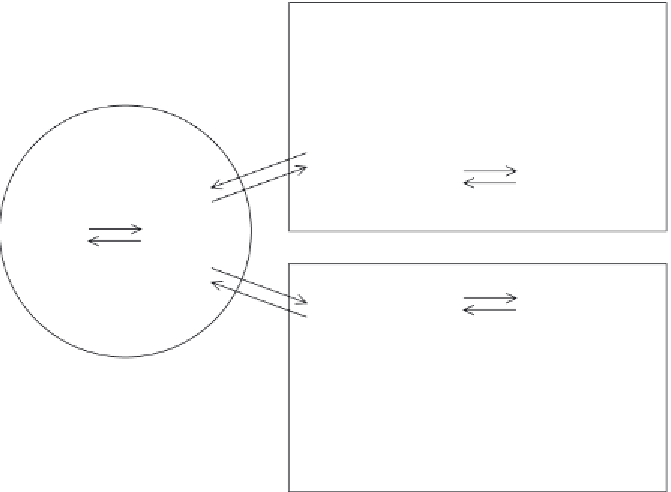Biology Reference
In-Depth Information
Stomach contents
(pH 1.0)
Nonionized/ionized ratio
favors absorption
Blood (pH 7.4)
Nonionzed
[1]
lonized
[0.43]
Ionized
[54,000]
Nonionized
[1]
Nonionized
[1]
lonized
[460]
Intestinal contents
(pH 5.3)
Nonionized/ionized ratio
does not favor absorption
Figure 3.4
Proportion of nonionized and ionized forms of 2,4-D (p
K
a
2.6) in the stomach and intes-
tinal contents
(adapted from Hodgson et al., 1991).
Only the nonionized form crosses cell membranes.
be metabolized before reaching the systemic circulation. This first-pass metabolism
decreases the systemic availability (bioavailability) of the parent compound. Some
highly lipophilic compounds such as organochlorine pesticides are absorbed into the
lymphatic system in a manner similar to the absorption of nutritional fats (
Turner and
Shanks, 1980
). Absorption into the lymphatic system bypasses delivery to the liver and
the potential for first-pass metabolism.
Many of the in vivo oral absorption studies in laboratory animals have demonstrated
that oral absorption of many pesticides can be significantly greater than absorption fol-
lowing skin exposure. This is especially applicable to the pyrethroid class of insecticides,
which do not readily penetrate skin and usually have a dermal bioavailability of less
than 10% in human skin. Deltamethrin is rapidly absorbed (
T
max
1.0 h) and its abso-
lute oral bioavailability was 18% in rats given doses in the range of 0.2-10 mg/kg by
oral gavage in glycerol formal (
Kim et al., 2007
). Permethrin was less rapidly absorbed
(
T
max
3.52 h) and had a greater absolute bioavailability (
F
61%) in the same strain
of rats (
Anadon et al., 1991
). Many of the organophosphates are readily absorbed,
although the data suggest that pesticide formulation can result in absorption varying
from 20% to as much as 70% according to several human studies (
Eaton et al., 2008;


Search WWH ::

Custom Search